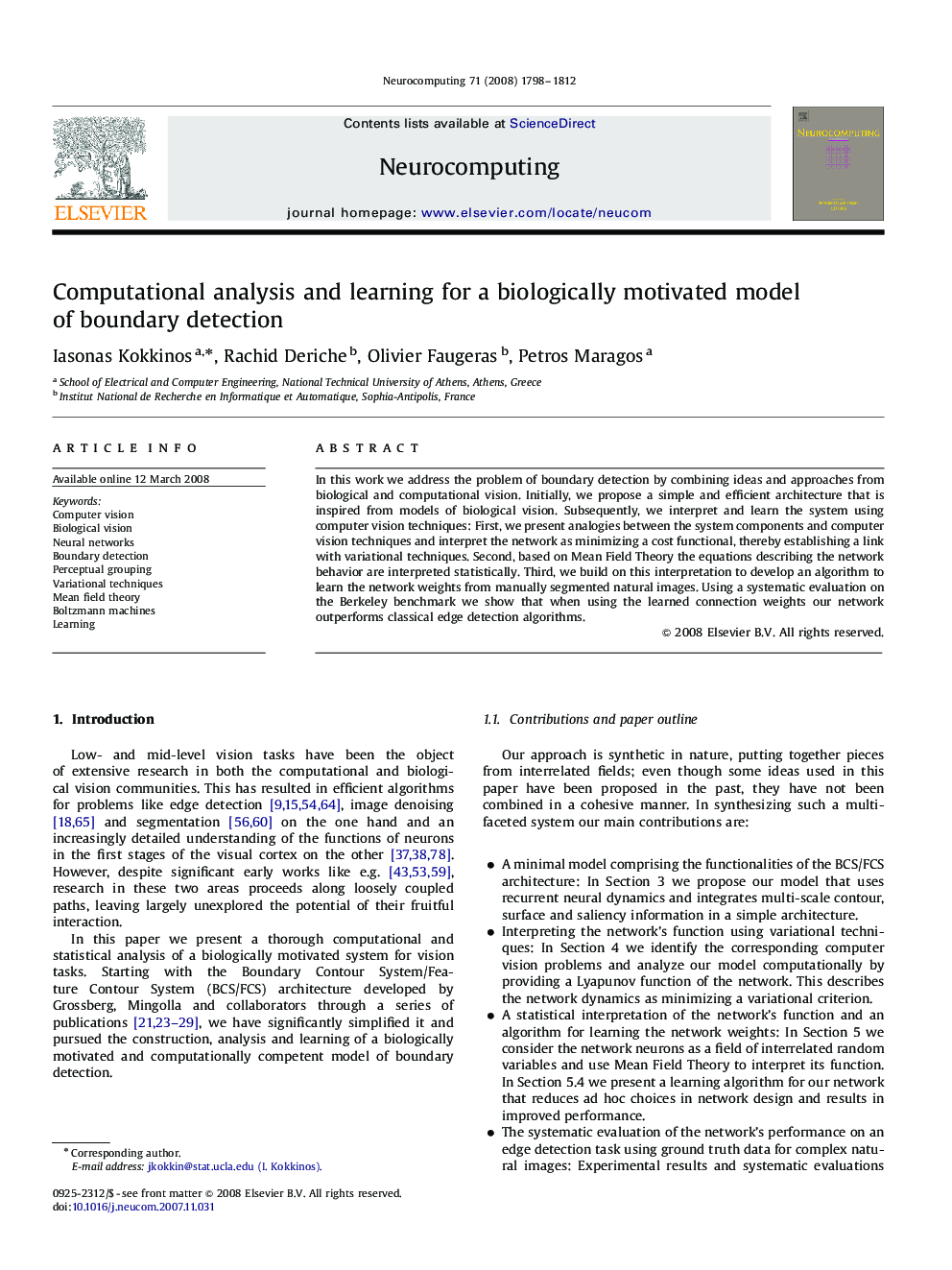| Article ID | Journal | Published Year | Pages | File Type |
|---|---|---|---|---|
| 413017 | Neurocomputing | 2008 | 15 Pages |
In this work we address the problem of boundary detection by combining ideas and approaches from biological and computational vision. Initially, we propose a simple and efficient architecture that is inspired from models of biological vision. Subsequently, we interpret and learn the system using computer vision techniques: First, we present analogies between the system components and computer vision techniques and interpret the network as minimizing a cost functional, thereby establishing a link with variational techniques. Second, based on Mean Field Theory the equations describing the network behavior are interpreted statistically. Third, we build on this interpretation to develop an algorithm to learn the network weights from manually segmented natural images. Using a systematic evaluation on the Berkeley benchmark we show that when using the learned connection weights our network outperforms classical edge detection algorithms.
